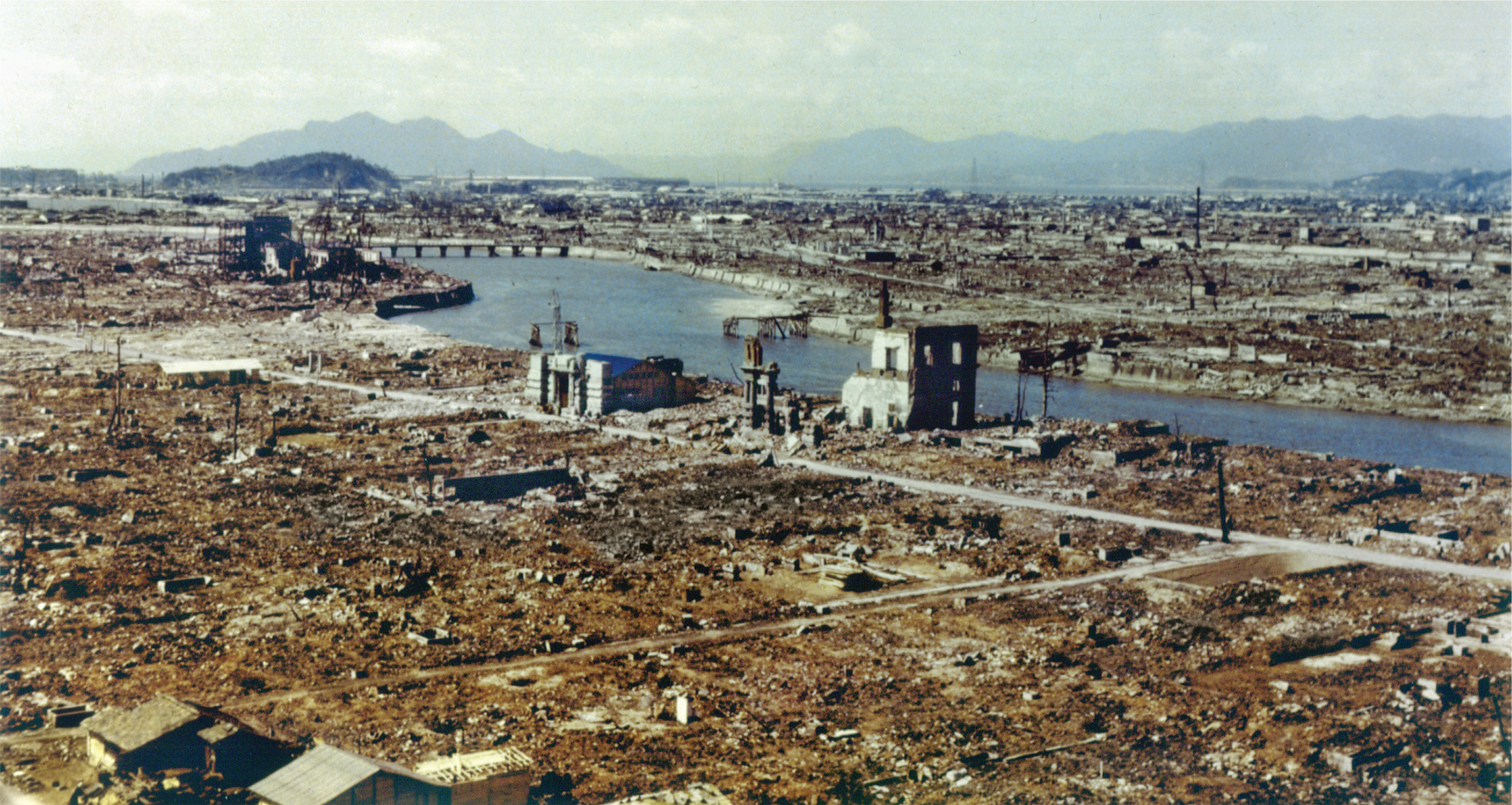The American Promise:
Printed Page 737
The American Promise Value
Edition: Printed Page 685
Atomic Warfare
In mid-
President Truman saw no reason not to use the atomic bomb against Japan if doing so would save American lives. Despite numerous defeats, Japan still had more than 6 million reserves at home for a last-

With American assurance that the emperor could retain his throne after the Allies took over, Japan surrendered on August 14. On a troop ship departing from Europe for what would have been the final assault on Japan, an American soldier spoke for millions of others when he heard the wonderful news that the killing was over: “We are going to grow to adulthood after all.”
While all Americans welcomed peace, some worried about the consequences of unleashing atomic power. Almost every American believed that the atomic bomb had brought peace in 1945, but nobody knew what it would bring in the future.
Major Campaigns and Battles of World War II, 1939–1945
| September 1, 1939 | Germany attacks Poland. |
| September 3, 1939 | Britain and France declare war on Germany. |
| April 1940 | Germany attacks Denmark and Norway. |
| May 1940 | Germany invades Netherlands, Belgium, Luxembourg, and France. |
| June 1940 | Italy joins Germany in war against Allies. |
| June– |
Battle of Britain. |
| June 22, 1941 | Germany invades Soviet Union. |
| December 7, 1941 | Japan attacks Pearl Harbor. |
| December 8, 1941 | U.S. Congress declares war on Japan. |
| December 11, 1941 | Germany and Italy declare war on United States. |
| January 2– |
Battles of Bataan and Corregidor. |
| May 7– |
Battle of the Coral Sea. |
| June 3– |
Battle of Midway. |
| August 1942– |
Battle of Guadalcanal. |
| August 21, 1942– |
Battle of Stalingrad. |
| October 23– |
British halt Germans at Battle of El- |
| November 1942– |
Allies mount North African campaign. |
| July 10, 1943 | Allies begin Italian invasion through Sicily. |
| June 4, 1944 | Allies liberate Rome from German occupation. |
| June 6, 1944 | D Day— |
| August 25, 1944 | Allies liberate Paris. |
| September 12, 1944 | Allies enter Germany. |
| October 23– |
Battle of Leyte Gulf. |
| December 16, 1944– |
Battle of the Bulge. |
| February 19– |
Battle of Iwo Jima. |
| April 1– |
Battle of Okinawa. |
| May 2, 1945 | Soviet forces capture Berlin. |
| August 6, 1945 | United States drops atomic bomb on Hiroshima. |
| August 9, 1945 | United States drops atomic bomb on Nagasaki. |
REVIEW Why did Truman elect to use the atomic bomb against Japan?